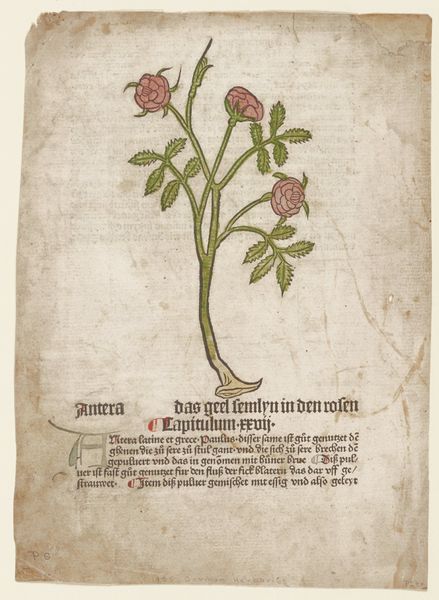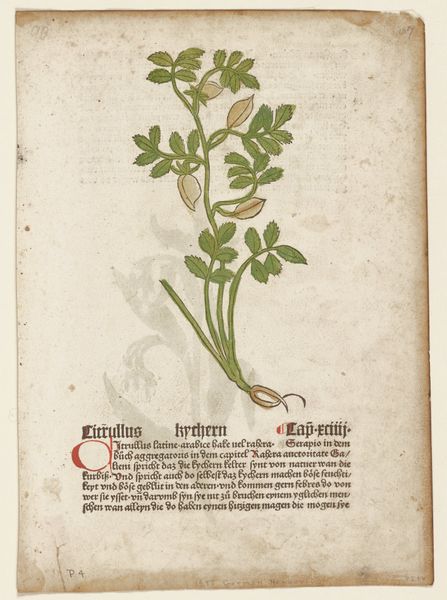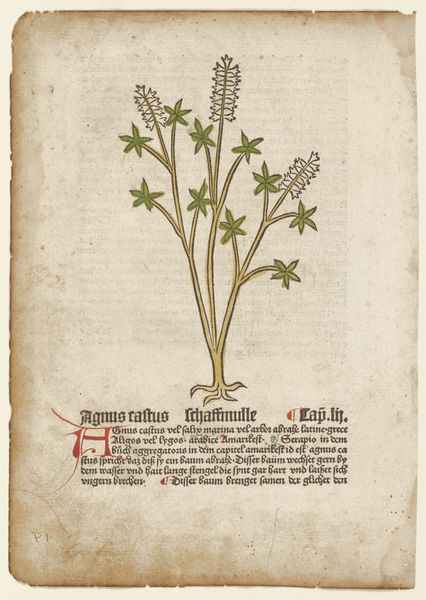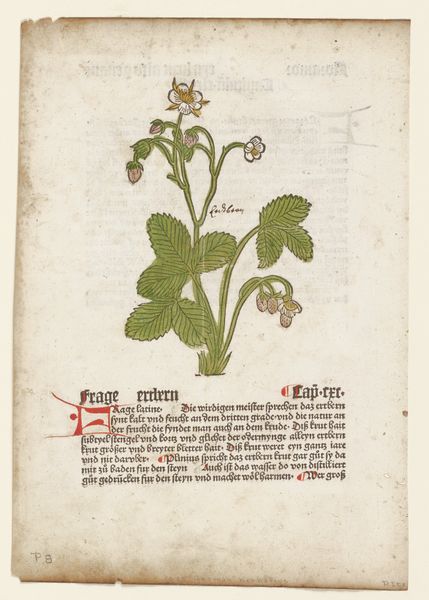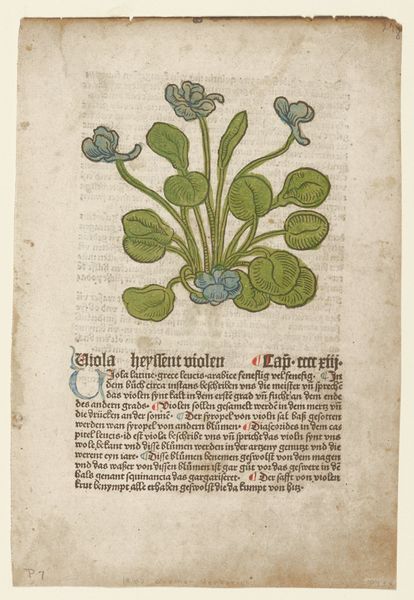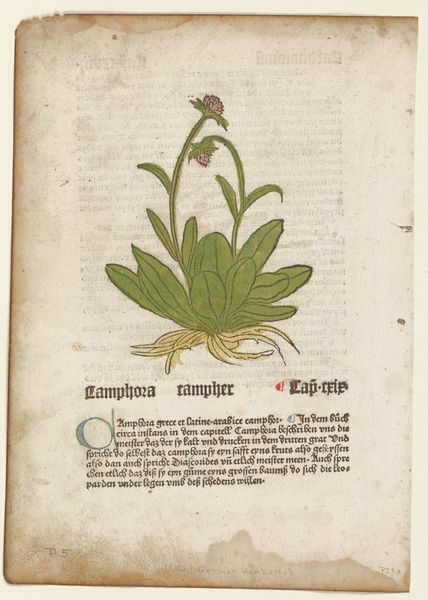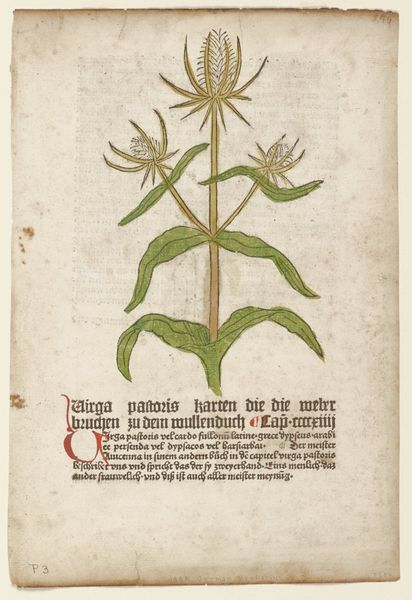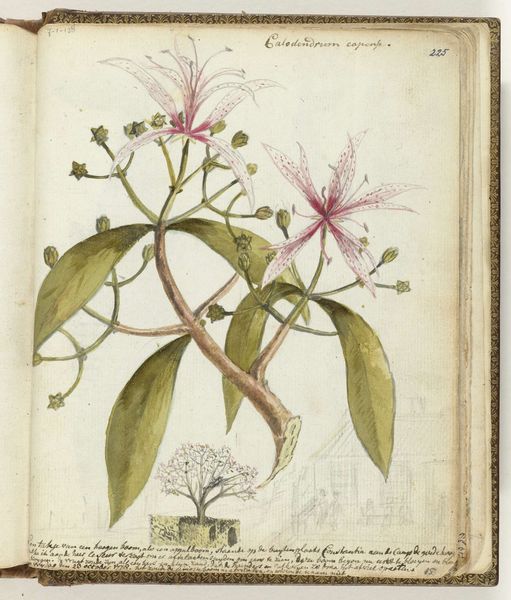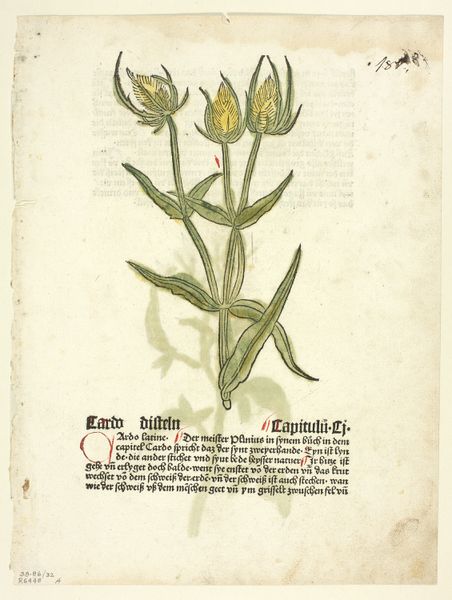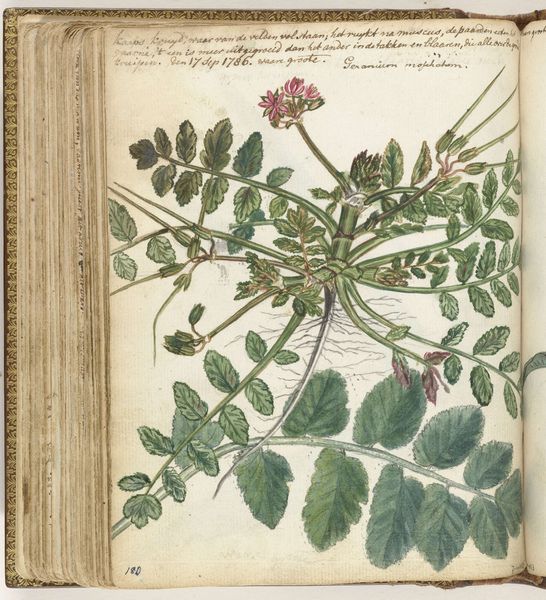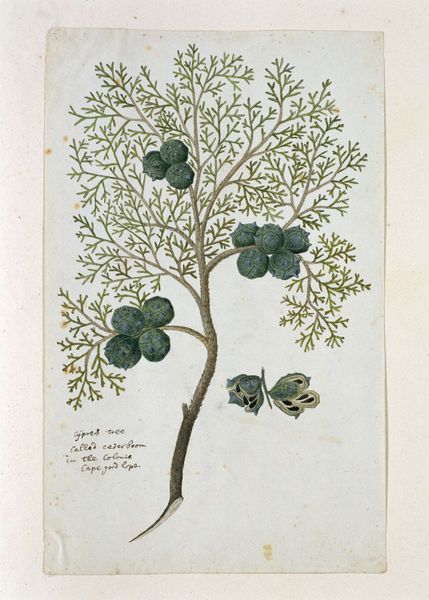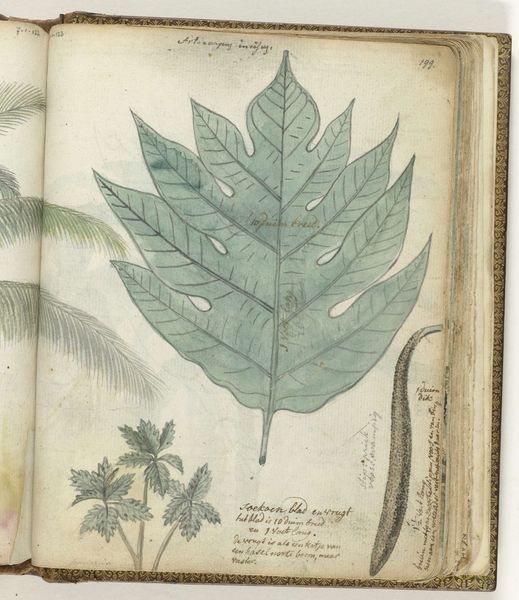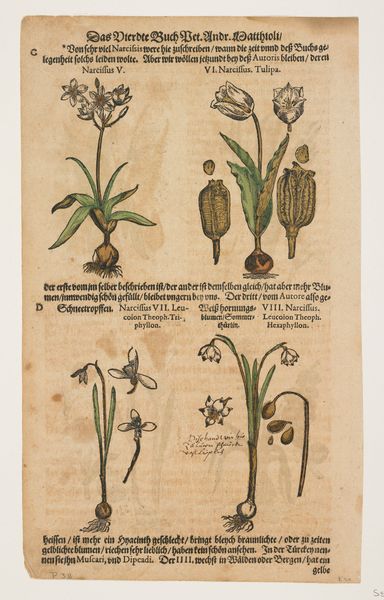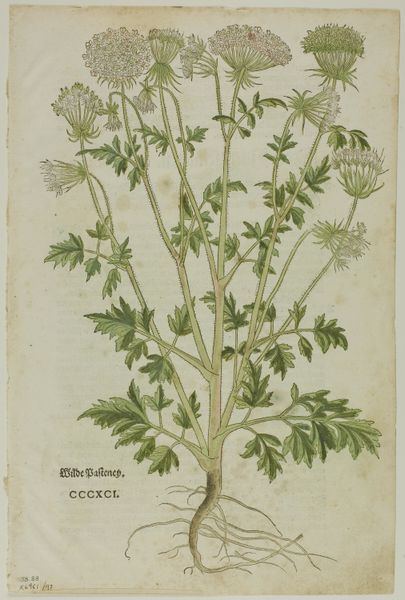
drawing, painting, print, paper, watercolor, ink
#
drawing
#
medieval
#
water colours
#
painting
# print
#
paper
#
watercolor
#
ink
#
history-painting
Dimensions: 7 3/4 x 5 1/2 in. (19.69 x 13.97 cm) (image)
Copyright: Public Domain
This botanical illustration of ‘Sene also Genat’ was made around 1487 by Johannes de Cuba, and it presents a plant whose most striking feature is its ripe fruit. Within the medieval context, plants were not merely objects of scientific study but also symbols imbued with spiritual and medicinal properties. Consider the form of the fruit itself—split open to reveal its seeds, suggesting themes of fertility and renewal. This motif is not isolated; echoes resonate through art history. The pomegranate in Renaissance paintings, for instance, shares this symbolism of abundance and the promise of new life. The image engages with a deep, subconscious understanding of nature's cycles, a rhythm that has shaped human consciousness for millennia. But, observe how the plant's form is meticulously rendered, almost clinically. This precision reflects a desire to understand and control nature. What emerges is a visual representation of humanity's ongoing attempt to reconcile with nature. This tension between control and chaos has played out across cultures and centuries.
Comments
No comments
Be the first to comment and join the conversation on the ultimate creative platform.
